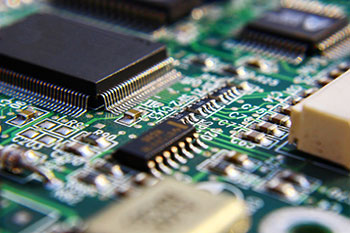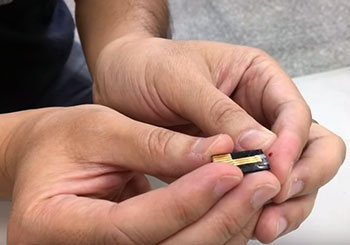 Using advanced computational methods, University of Wisconsin–Madison materials scientists have discovered new materials that could bring widespread commercial use of solid oxide fuel cells closer to reality.
Using advanced computational methods, University of Wisconsin–Madison materials scientists have discovered new materials that could bring widespread commercial use of solid oxide fuel cells closer to reality.
A solid oxide fuel cell is essentially an engine that provides an alternative way to burn fossil fuels or hydrogen to generate power. These fuel cells burn their fuel electrochemically instead of by combustion, and are more efficient than any practical combustion engine.
As an alternative energy technology, solid oxide fuel cells are a versatile, highly efficient power source that could play a vital role in the future of energy. Solid oxide fuel cells could be used in a variety of applications, from serving as a power supply for buildings to increasing fuel efficiency in vehicles.
However, solid oxide fuel cells are more costly than conventional energy technologies, and that has limited their adoption.


 Deadline Extended: March 19, 2018
Deadline Extended: March 19, 2018
 Engineers are developing a new method of processing nanomaterials that could lead to faster and cheaper manufacturing of flexible, thin film devices, such as touch screens and window coatings.
Engineers are developing a new method of processing nanomaterials that could lead to faster and cheaper manufacturing of flexible, thin film devices, such as touch screens and window coatings. A new process for growing wafer-scale 2D crystals could enable future super-thin electronics.
A new process for growing wafer-scale 2D crystals could enable future super-thin electronics.
 In a recently published ECS Journal of Solid State Science and Technology paper, ECS member Roger Loo and coauthors describe a new epitaxial growth technology and address the challenges of implementation. The open access article, “
In a recently published ECS Journal of Solid State Science and Technology paper, ECS member Roger Loo and coauthors describe a new epitaxial growth technology and address the challenges of implementation. The open access article, “ As Fitbits and other
As Fitbits and other  Engineers used tissue paper—similar to toilet tissue—to make a new kind of wearable sensor that can detect a pulse or a blink of an eye.
Engineers used tissue paper—similar to toilet tissue—to make a new kind of wearable sensor that can detect a pulse or a blink of an eye.